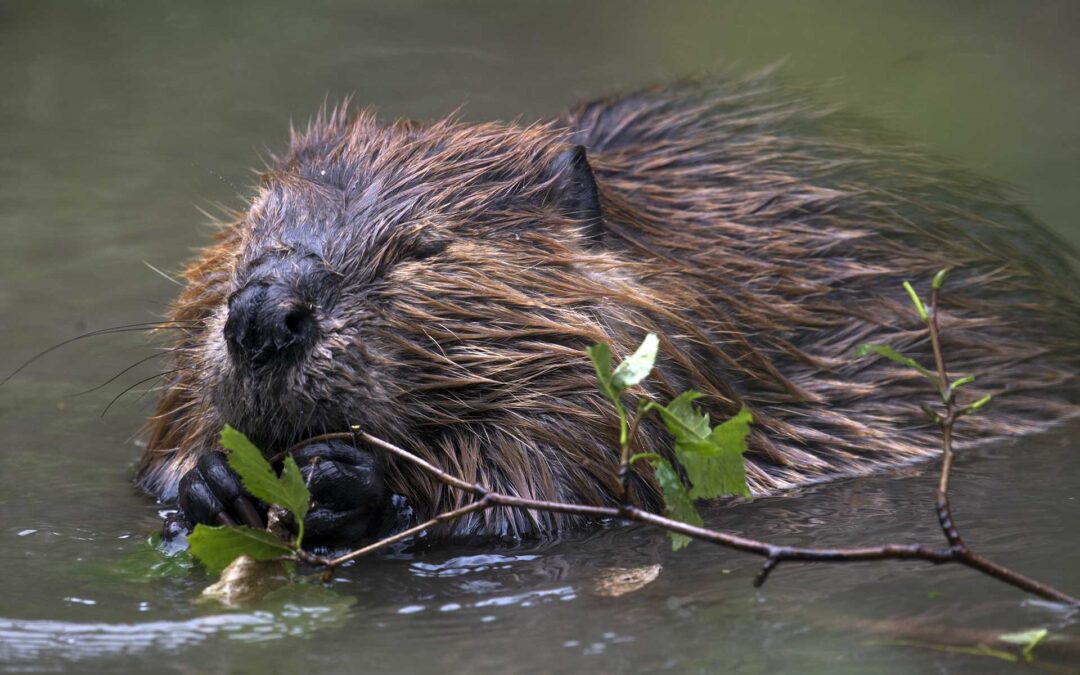My View by Chris Smith Feb 28, 2025
In many ways, New Mexico is at the predictable forefront of a changing climate. Catastrophic wildfires and destructive flooding are in the headlines. Water supplies for people, crops, wildlife and livestock are uncertain depending on the year. In December, the lilac bush in my yard started budding after weeks of unseasonably warm weather.
It can be scary to live through these tumultuous times. But we need to keep looking for hope and solutions as we build out our state’s resiliency to climate change. Part of that effort could involve the second most industrious ecosystem engineers on the planet (after humans), the beaver.
With their incredible dam-building ability, these critters help to store surface water, recharge aquifers, filter and clean water, create wildfire breaks and refugia, slow floodwaters, construct meadows and wetlands, and even sequester greenhouse gases.
That is a heck of a lot of good things — and I challenge any New Mexican to take issue with that list of beaver benefits. Oh, and beavers work for free. The problem is, we don’t have as many beavers in as many places as we need. Hundreds of years ago nearly every waterway in the state — every stream, creek, river, pond and lake — held (or was held by) beavers and their dams. Hundreds of millions of beavers across North America made for a much more lush, green and wet landscape. But by 1900, they were almost extinct, with only 100,000 beavers left on the continent.
Fortunately, the New Mexico Department of Game and Fish has started taking important steps to ensure a meaningful place for beavers on our landscape. Our state’s beaver population now ranges between 6,000-12,000, but they are absent from many of the places we need them most, particularly high headwaters areas on public lands.
To expand our beaver population, move beavers out of problematic situations, get more beavers into beneficial places, and help landowners and land managers coexist with beavers (which can prove difficult, as they are stubborn builders), New Mexico should proactively work on beaver restoration, relocations and coexistence. Fortunately, money to support that kind of work is on the table thanks to Rep. Nathan Small, D-Las Cruces, who has wisely included money for beavers in the state’s annual budget proposal this legislative session. If that money goes through, it would be an incredibly cost-effective investment in water security, wildfire mitigation and climate resiliency.
That investment is part of a larger effort being supported by all manner of wildlife and conservation groups — from hunters to bunny huggers — to modernize the New Mexico Department of Game and Fish so it can study and invest in more wildlife like beavers. Bipartisan Senate Bill 5, sponsored by Sens. Pete Campos, Peter Wirth, Crystal Brantley, and Rep. Matthew McQueen includes a suite of carefully crafted updates and changes that would better equip the department to steward wildlife through the challenges of the 21st century.
More and more, it is obvious that our human fate is strongly connected to our wild neighbors and relatives with whom we share a landscape. Restoring wildlife populations is not just the right thing to do from an ethical perspective; it is necessary for our own ability to survive and thrive.
Restoring and coexisting with beavers is a critical part of that co-dependency. Where there are beavers, there is water. And water is life.
Chris Smith was born and raised in Northern New Mexico. He is the wildlife program director for WildEarth Guardians and one of the leaders of the New Mexico Beaver Project.
